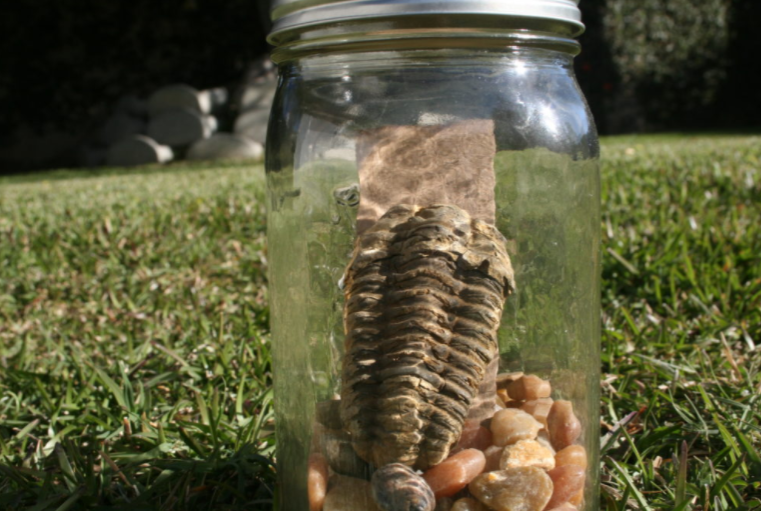 A casual 545 million year old trilobite fossil from Morocco, sitting in my backyard. Photo by Benjamin Minch
A casual 545 million year old trilobite fossil from Morocco, sitting in my backyard. Photo by Benjamin Minch
By Benjamin Minch, Staff Writer
About 545 million years ago, the world was much different than it was today. Since it was covered almost completely by ocean, the only life remained in the sea. Suddenly, there was an explosion of creatures that would be deemed weird by today’s standards—they were swimming around in great numbers during a period known as the Cambrian. With these creatures however, comes a problem. Where did they all come from?
When students at Fountain Valley High School were asked the same question, many gave very creative answers or no answer at all.
“I think that they came on a meteorite from space that collided and landed in the water,” said senior Alvin Nguyen.
“I have no clue how they got here,” said junior Garret Po. “I didn’t even know an event like this one happened before.”
Many of the answers were very similar to that of Po. Barely anybody knows about the Cambrian explosion because it is glossed over in schools. This is because it is a highly controversial subject and one that challenges traditional theory of Neo-Darwinism.
The main problem with the Cambrian explosion deals with time. All of the thousands of new species that arose came in about 50 million years. That may seem like a very long time, but it is a mere day in geological time. Darwinism acts on a set of mutations and natural selection, which is a very slow process. To a Darwinist, the Cambrian explosion should have been a gradual spreading of organisms, rather than the sudden emergence of many new body plans in 50 million years.
The main evidence for the Cambrian explosion is found in the fossil record. Varying unique organisms such as Trilobites come from no previously similar “ancestor” species in the Precambrian era. There are many ways that strong Neo-Darwinists try to defend this hole in their theory. Presented are some of the explanations, some as unique as the Cambrian itself, answering unanswered questions: How did that many species appear in such a small amount of time? Where are the missing fossils?
Fossils in Precambrian are too small and soft
This is the most commonly held position supporting the gradual evolution of the Cambrian animals. It states that this sudden appearance wasn’t so sudden and there were plenty of animals that came before. None of these species have been found in the fossil record. Darwinists will say this is because fossils are too small and soft to be preserved through the usual way of fossil formation (long periods of sedimentation and pressure). This theory is not well supported because there have been some precambrian fossils found such as stromatolites and bacterial colonies which are still preserved despite being very small and soft.
We just haven’t found them yet
Often, Neo-Darwinists will find lines in layers of rocks and call them “trace fossils.” This simply means that it was another animal that happened to move over this rock. People will claim that these are traces of the small and soft versions of Cambrian animals, but these barely give any evidence at all.
The Cambrian “explosion” isn’t actually that explosive
It is very common for Darwinists to discredit the Cambrian explosion, saying that it was over a longer period than many make it out to be. They spend all their time refining their dating methods, but completely ignore the missing fossils they still need to prove their theory. Advocates of this theory simply try to escape the whole Cambrian conversation by ignoring that it was a significant event.
After students at FVHS were told of the various theories of the Cambrian explosion, five reported wanting to learn about the event in school and the other three were uninterested. The Cambrian explosion is a fascinating event filled with mystery and conspiracy that makes it thrilling and packed with information. It is the gateway into our past. Our history here on this earth and is worth learning more about in public schools.





